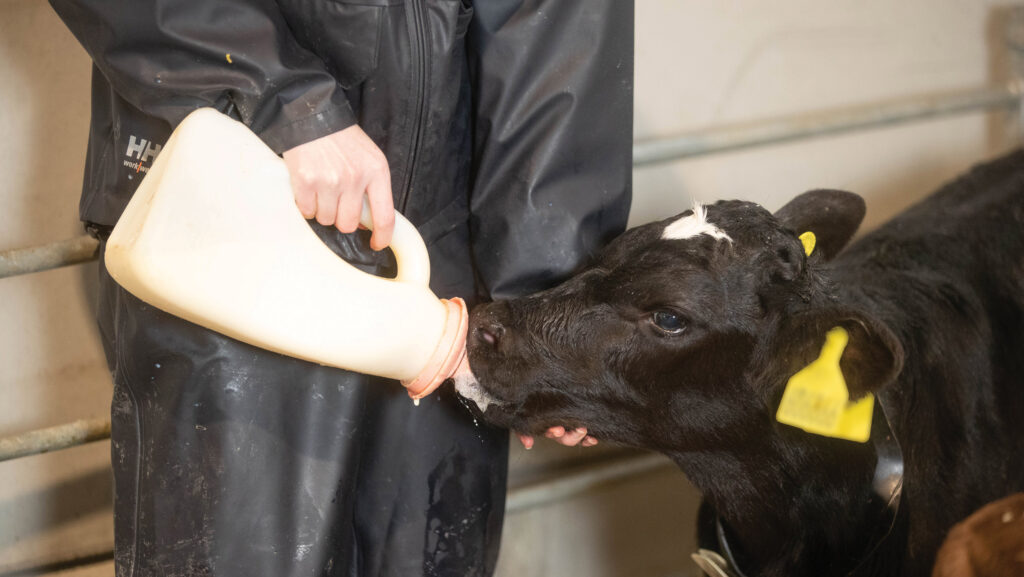Tips on using and cleaning a milk pasteuriser correctly
 © Tim Scrivener
© Tim Scrivener Pasteurising whole milk for calves kills major pathogens while protecting useful antibodies – but it is not a remedy for unhygienic practices.
Keeping the machine clean inside and out, and only using fresh, clean milk, are essential to make a nutritious calf food, according to vet Graham Shepherd of G Shepherd Animal Health.
He has been importing pasteurising machines from the US and Italy for more than 15 years and says there has been a move away from using them just to pasteurise “waste” milk.
Anything containing blood, high cell counts, mastitis-causing pathogens or antibiotics residues is no longer fed to dairy replacements.
See also: Guide to feeding newborn calves colostrum
Furthermore, feeding whole milk used to be a financial decision influenced by production of milk surplus to quota, or a comparison between milk price and the cost of milk powder.
Today, however, with pasteurisers retailing from £4,000 to £10,000 plus VAT, Graham says many herds routinely feed heat-treated whole milk, colostrum and transition milk for health reasons.

© Duecinox
Killing pathogens
“Pasteurisation is now accepted as a proven way of improving calf and herd health – controlling Johne’s being the commonest reason.
“It kills Johne’s, mycoplasma, TB, and salmonella. And pasteurising by heating to 60C for 60 minutes does not denature [colostrum] antibodies,” he explains.
Financially, Graham thinks pasteurised milk offers value for money because it is a good-quality, hygienic feed for a growing calf: “It usually contains more fat and protein than what you can buy in a bag of milk powder,” he says.
“If you are comparing the electricity spend versus heating water to mix milk powder, the electricity cost [for pasteurising] is double.
“But the payback in animal health, growth rate and adult cow productivity is massive.” (See “Pasteurising colostrum”.)
Use clean milk
However, he stresses: “Milk going into the pasteuriser has to be clean, so it’s not a swap-out for dirty calf-feeding systems. And it’s the hygiene conscious [farmers] that move to pasteurisation.”
An efficient system operates around pasteurising morning milk for feeding in the afternoon.
This works best when milk is piped straight into the machine, says Graham.
This avoids having to collect, chill and store milk in clean containers with lids (or a bulk tank for volume) before reheating it.
Milk diverted before it reaches the plate cooler will also be above 30C to start with, he explains, which is more energy efficient when heating it up to 60C.
After pasteurising, the cycle cools milk, keeping it at room temperature until feeding, when it is reheated to 39-40C.
Clean with care
“Clean the pasteuriser after each load [of milk treated] with washing-up detergent, warm water, a bit of elbow grease and a brush.
“Don’t re-pasteurise any milk because it ends up too thick and blocks pipes.”
He points out that when cleaning, it is important not to use acid or alkali dairy chemicals and to prevent such residues from the milking line or dump bucket mixing with milk before heating it: “This results in clots, or the milk curdling, in the pasteuriser.”
A water softener in hard water areas will prolong the life of the element in the water jacket and pipework, he says, while the temperature gauge should be calibrated periodically.
As the pasteuriser is constructed from stainless steel, it can be kept alongside the bulk tank.
“And keep it clean: as clean as any other equipment in the dairy. I have seen them covered in bird droppings.”
Pasteurising colostrum research
For further reading see the following research:
